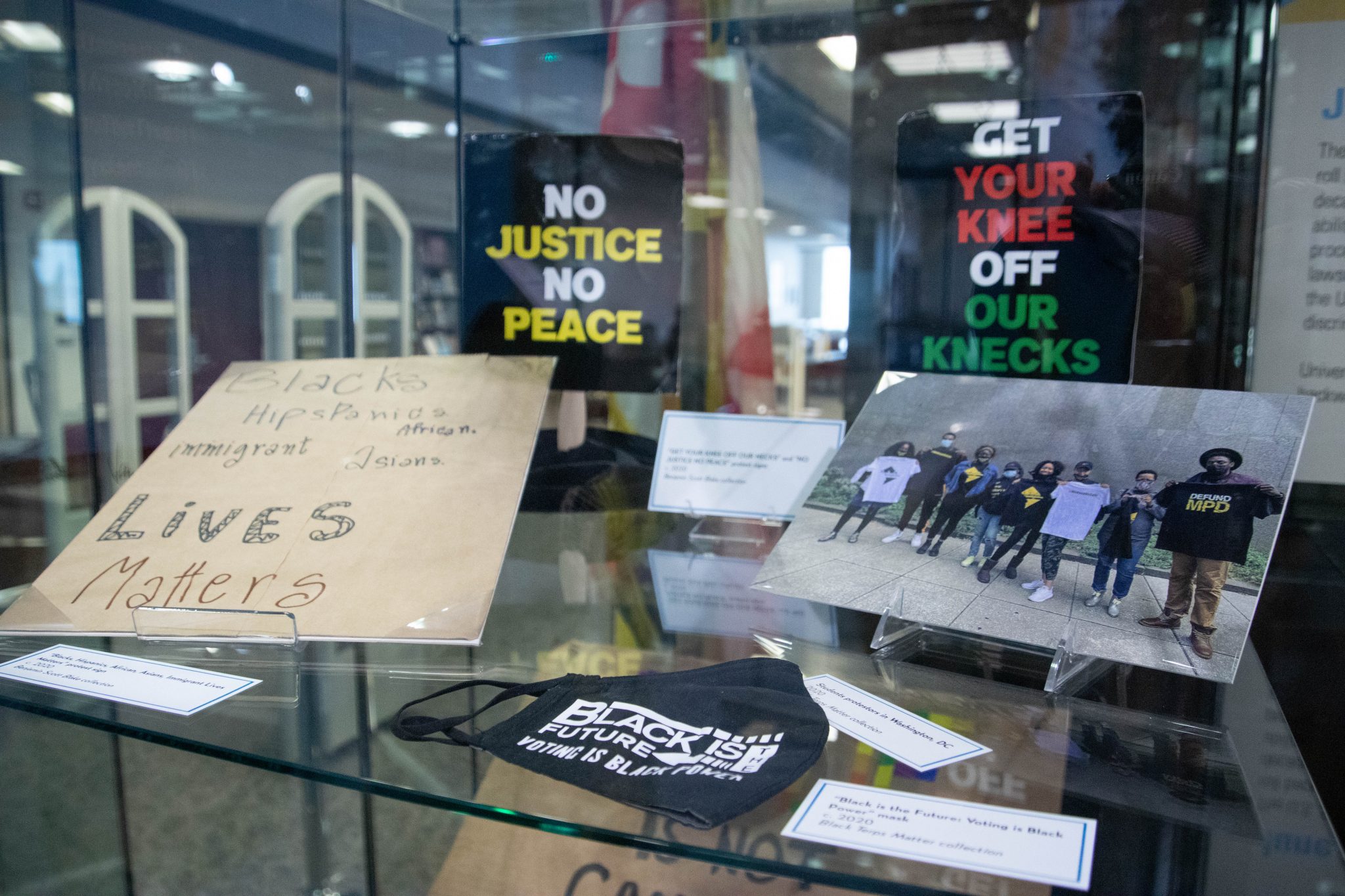By Michael O’Shea
For The Diamondback
A new exhibition room celebrating the University of Maryland’s history of student activism for underrepresented groups is open in Hornbake Library.
The exhibit, named “Rising Up: 100 Years of Student Activism for Justice and Civil Rights at the University of Maryland,” revisits historical moments of student activism on campus for underrepresented groups. It includes informative resources for significant on-campus movements at this university and memorabilia from them.
The Rising Up exhibition room, which opened in October, has been in the works for about two years.
The exhibit is presented in the form of a timeline of student activism on campus. Each section of the timeline includes an audio recording detailing the significance of the timeframe.
The timeline begins in 1848, highlighting this university’s origins as the Maryland Agricultural College. The display acknowledges many of this university’s founders were slaveowners.
The timeline also explores the history of advocacy for women, racial groups and ethnic groups at this university with display cases to reflect this expansion of student activism. The display cases include photos, zines by students and documentation of lawsuits.
The timeline concludes with students’ protest apparel, signs and flyers from the 2020 Black Lives Matter protests.
[UMD archive gives students a look into life, work of artist Alonzo Davis]
Several faculty members at this university led the initiative to develop the exhibit, including Lae’l Hughes-Watkins, Maureen Jones and Natalie Trapuzzano.
Trapuzzano, this university’s archivist, said the inspiration for the exhibition stemmed from Hughes-Watkins’ relationship with student groups on campus including Black Terps Matter. In these conversations, students showed her how the national Black Lives Matter movement was represented on campus, Trapuzzano said.
“What I hope students get from [the exhibit] is that there’s always more work to be done,” Trapuzzano said. “Let’s honor all of the effort put in by the students that came before us, and let’s also sustain that energy and keep demanding more.”
Jones served as the University Archives’ graduate assistant for instruction, reference, outreach and research engagement from November 2020 until May 2023 and helped with the research and planning of the exhibition.
Jones explained that they have a background in student activism from their time at the University of Pittsburgh as an undergraduate student. This experience helped them by giving an understanding of how student activism organizations operate.
“Having that organizational, foundational history and experience helped me understand the way that former student activist groups navigated around the campus,” Jones said.
[UMD student turns experience with incarcerated parent into support group]
Hughes-Watkins, University Archives’ associate director of engagement, inclusion and reparative archiving, said while anti-war protests tend to be at the forefront of discussions about student activism, the efforts of marginalized communities often go unrecognized.
Hughes-Watkins emphasized how she used this opportunity to learn more about the history of marginalized communities on campus.
They alluded to a 1941 fire at Princess Anne Academy, which is now the University of Maryland Eastern Shore, that killed six people, including a 3-year-old boy. The school’s student body was primarily Black, and a report after the fire stated many campus buildings were unsafe.
“I know it’s a horrible part of our history to think about, but to know that that hadn’t been discussed was rather jarring,” Hughes-Watkins said.
Hughes-Watkins said the exhibit is designed to not only recognize this university’s “difficult” past, but also highlight the “triumphs.”
While the exhibition is expected to close in August 2024, there will be a digital version of the exhibition with displays that were absent from the final exhibition, Trapuzzano said.
The exhibit’s materials could also be used for other displays on campus, Hughes-Watkins said.
Trapuzzano praised student involvement in these initiatives and encouraged students to participate moving forward.
“A lot of the changes that have happened to make this campus more diverse, more inclusive, more accepting, more equitable … [happened] because students stepped up and demanded it,” Trapuzzano said.



